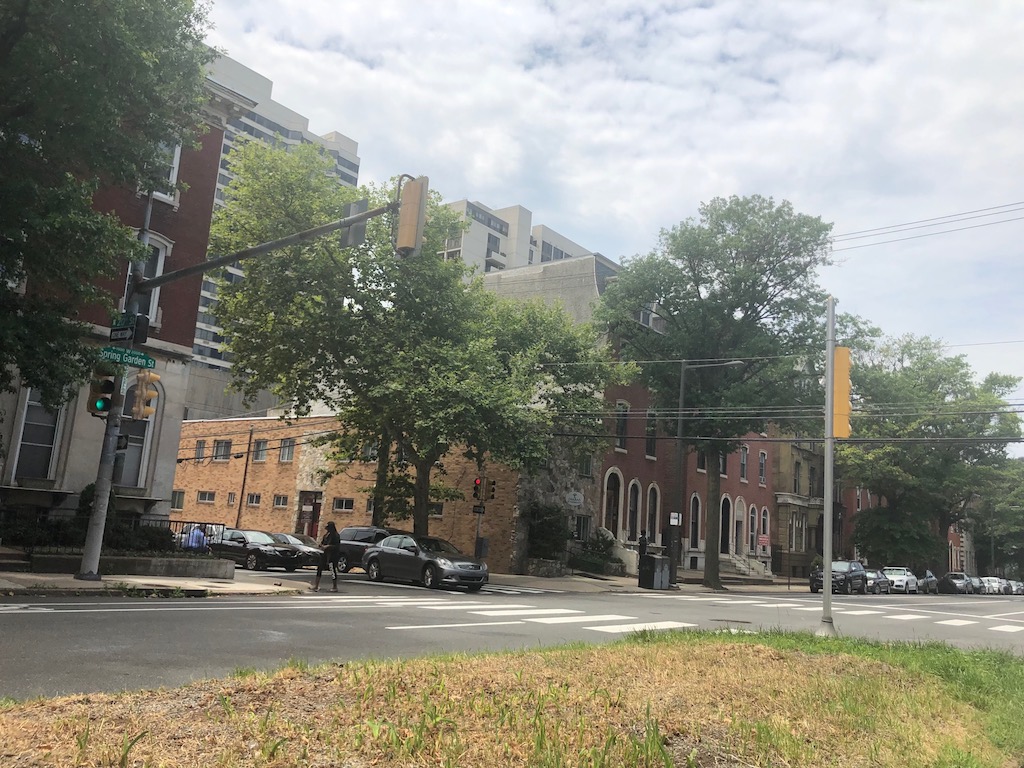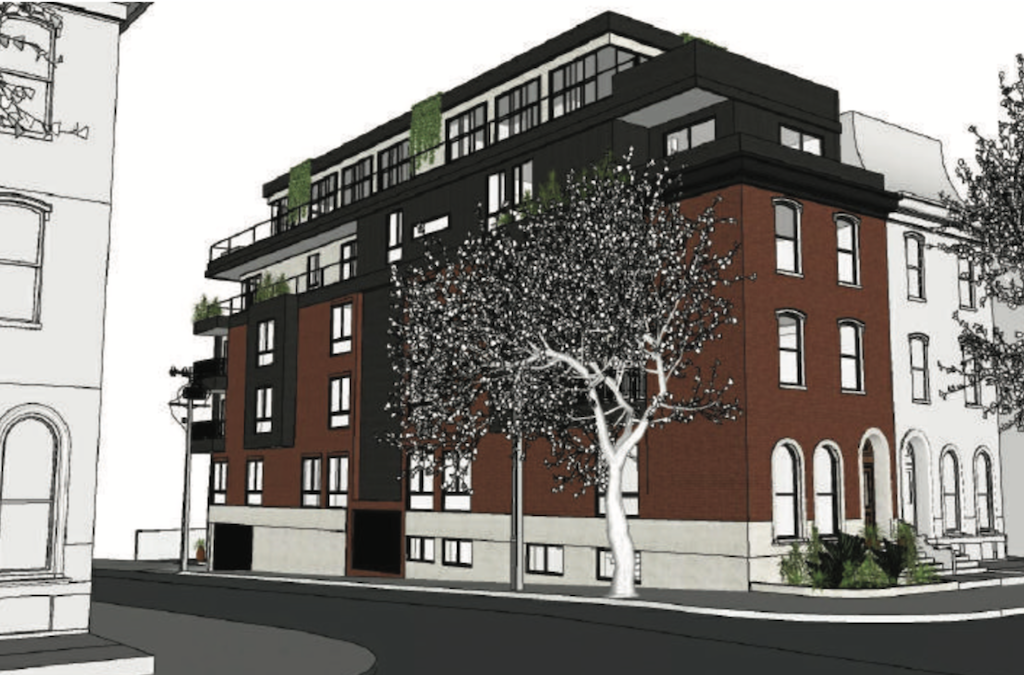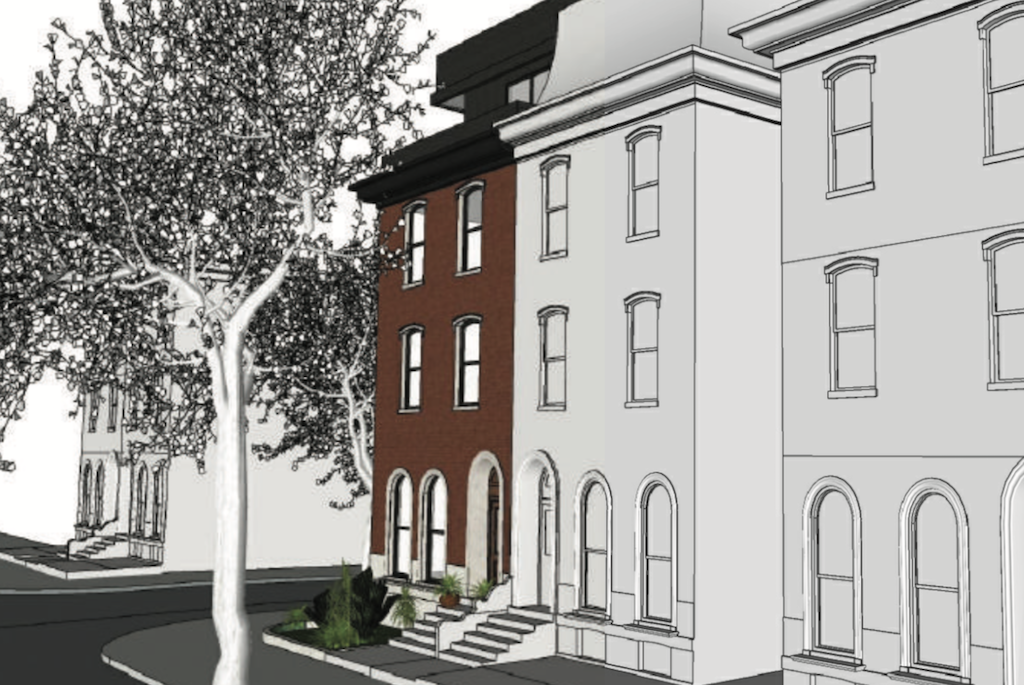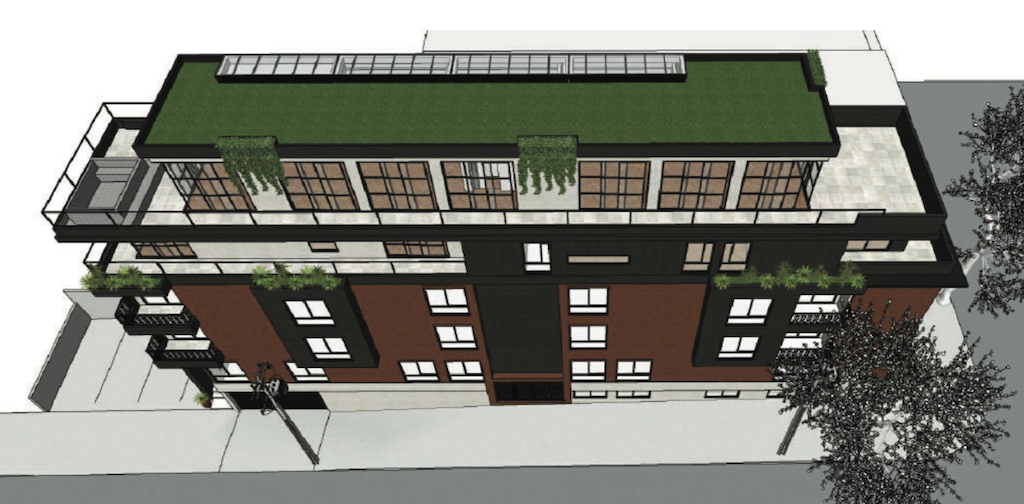There are over a dozen historic districts in Philadelphia, most of which are centered around a collection of buildings whose architecture makes them worthy of designation. But there are always stragglers in each district which don’t clear the historic bar, generally because they are new compared to their neighbors or they’re of a similar age but have been altered beyond recognition. Those buildings are considered “non-contributing” buildings within a historic district, and these structures are afforded considerably more latitude when it comes to additional alternation or demolition.
The Spring Garden Historic District is one of our favorite parts of the city, with its examples of Italianate architecture, along with Victorian, Second Empire, Queen Anne, Richardsonian Romanesque, Beaux Arts, and Italian Renaissance buildings. Perhaps most reliable are the Federal style buildings (if that’s the correct term), basically buildings that look like traditional Philadelphia row homes, but with extra details like a fancy cornice, decorated lintels, or an arched entryway. For these buildings, it’s the repetition of the cornice line and the window heights that catch the eye, even as the details change from building to building. Notably though, 2000 Spring Garden St. doesn’t fit in with its immediate neighbors or any other buildings in the area, which explains why it’s considered a non-contributing building in the district.



We’re a little unclear on the history of this building. Based on the inventory of properties from the creation of the historic district in 2000, this building was built in 1875 and altered over time to its current condition. Looking at old permits though, we see plans to tear down the original building and to replace it with a two-story building with a mix of offices and apartments. What we do know for sure is that the building’s uses have remained more or less the same over time, generally with a mix of offices and apartments. At different points though, the Philadelphia Prison Society had the whole building, as did offices related to Saint Joseph’s hospital. Currently, we believe the building is once again a mix of residential and commercial. But not for long.
Developers bought the property earlier this year, paying $1.35M. Now they’re looking to tear down the existing building and replace it with a new five-story structure with seven apartments. As we mentioned, the building is in the historic district, but it’s not contributing, so the developers will be able to tear it down. They will, however, need support from the Historical Commission if they’d like to build something in its place and that new building will need to be compatible with the surrounding architecture. Looking at some renderings from KCA Design Associates, we see a building that will blend in with its neighbors, but clearly declare itself as a contemporary structure as well.



Assuming they’re able to build something that resembles the renderings, it will be a great upgrade over the current structure. The staff of the Historical Commission gave initial approval, subject to certain conditions, so we suspect the design will change somewhat before it goes before the full Commission this month. Then it’ll be up to that group to decide how things will move forward, and we’d wager they’ll give a thumbs up if the developers followed the advice of the HC staff.
